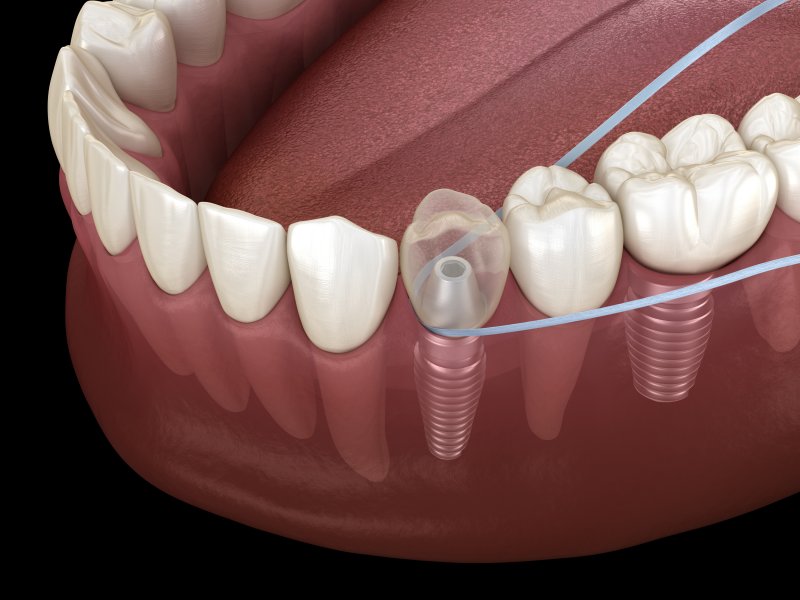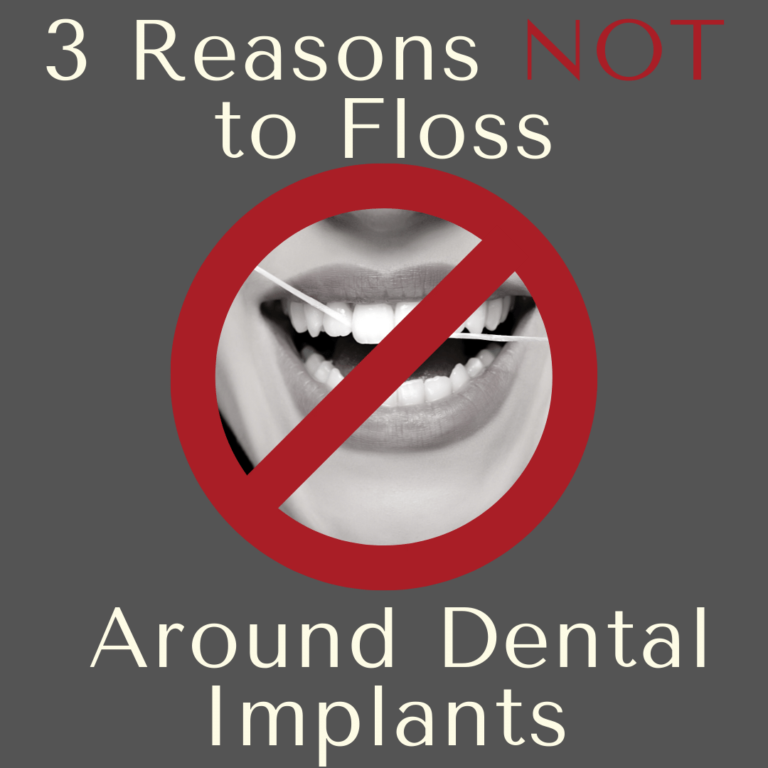Flossing With Dental Implants: Safe Practices
You know the importance of flossing for maintaining a healthy smile. But what about flossing with dental implants? It may seem like a tricky task, but fear not!
Flossing with dental implants is not only safe, but also crucial for their longevity. By following the right practices, you can ensure that your implants stay clean and free from any potential complications.
In this guide, we will explore the proper techniques for flossing with dental implants, as well as some common mistakes to avoid. So, grab your floss and get ready to take care of those pearly whites implants included!
Key Takeaways
– Flossing is crucial for maintaining the health and longevity of dental implants.
– Choosing the right floss and tools is essential to prevent damage to the implants and gum irritation.
– Proper flossing technique involves gently sliding the floss between each tooth, reaching the base of the implant.
– Neglecting to floss regularly increases the risk of gum disease and implant failure.
Importance of Flossing With Dental Implants
You should prioritize flossing when it comes to maintaining the health and longevity of your dental implants. Flossing is an essential part of your oral hygiene routine, especially when you have dental implants. It helps remove plaque and food particles that can accumulate around the implants and in between your teeth. By flossing daily, you can prevent the buildup of bacteria and reduce the risk of gum disease and peri-implantitis, which is inflammation around the implant.
When flossing with dental implants, it’s important to use the proper technique. Gently slide the floss between each tooth, making sure to reach the base of the implant. Be careful not to snap the floss or force it, as this can damage the implant or cause irritation to the surrounding gum tissue. Use a fresh section of floss for each tooth to avoid spreading bacteria.
Regular flossing not only promotes the health of your dental implants but also helps maintain a fresh breath and a clean mouth. It’s an integral part of your overall oral health care routine. Make flossing a daily habit to ensure the longevity of your dental implants and keep your smile healthy and beautiful for years to come.
Choosing the Right Floss for Implants
To ensure effective flossing with dental implants, it’s crucial to select the appropriate floss for your implants. Not all floss is created equal, and using the wrong type can potentially cause damage to your implants or irritate your gums.
Here are some important factors to consider when choosing the right floss for your implants:
– Soft and Gentle: Look for floss that’s specifically designed for sensitive gums. It should be soft and gentle to avoid irritating the delicate tissues around your implants.
– Non-Waxed: Waxed floss can leave behind residue and make it difficult to clean around your implants. Opt for non-waxed floss to ensure thorough cleaning without leaving any unwanted buildup.
– Floss Threader: Since implants have a crown or bridge attached to them, it can be challenging to thread regular floss between them. Using a floss threader can make it easier to maneuver the floss around your implants.
– Interdental Brushes: In addition to flossing, using interdental brushes can be beneficial for cleaning hard-to-reach areas around your implants. These small brushes can effectively remove plaque and debris, keeping your implants clean and healthy.
Proper Flossing Technique for Implants
To ensure effective flossing with dental implants, it’s important to adopt a proper flossing technique to maintain the cleanliness and health of your implants. Start by choosing a floss that’s specifically designed for implants, such as a tape or a spongy floss. These types of floss are gentle on the implants and less likely to cause damage.
To begin, take about 18 inches of floss and wrap it around your middle fingers, leaving a small section in between. Gently slide the floss in between your implants, using a back-and-forth motion. Be careful not to force the floss or snap it against the implant, as this can cause injury.
Once the floss is in between the implants, curve it around one side of an implant in a C-shape and move it up and down to remove any plaque or debris. Repeat this process for the other side of the implant.
Make sure to floss both sides of each implant, as well as the surrounding natural teeth. Pay attention to the gumline, as plaque buildup in this area can lead to gum disease.
After flossing, rinse your mouth with water or an antimicrobial mouthwash to remove any remaining debris. Remember to floss at least once a day to maintain the cleanliness and health of your dental implants.
Common Mistakes to Avoid When Flossing Implants
One common mistake to avoid when flossing implants is neglecting to floss thoroughly between each implant and the surrounding natural teeth. Flossing is essential for maintaining the health of both your implants and natural teeth, as it helps remove plaque and food particles from hard-to-reach areas.
To ensure you’re flossing implants correctly, here are some common mistakes to avoid:
– Skipping flossing altogether: Neglecting to floss regularly can lead to an accumulation of plaque and bacteria, which can increase the risk of gum disease and implant failure.
– Using a traditional floss: Traditional floss may be too thick or abrasive for implants. Instead, opt for implant-specific floss or interdental brushes that are designed to clean around implants without causing damage.
– Applying too much pressure: Being too forceful when flossing can harm the delicate gum tissues around implants. Gently guide the floss in a back-and-forth motion and avoid snapping it down between your teeth.
– Not flossing under the implant crown: It’s important to floss underneath the implant crown to remove any debris or plaque buildup. Use a floss threader or an interdental brush to access this area effectively.
Additional Tips for Maintaining Implant Health
Maintain implant health by regularly brushing and flossing around your implants. In addition to these essential practices, there are a few additional tips you can follow to ensure the longevity and health of your dental implants.
Firstly, it’s important to schedule regular dental check-ups and cleanings. Your dentist will be able to assess the condition of your implants and identify any potential issues early on. They can also professionally clean the hard-to-reach areas around your implants, ensuring that plaque and bacteria are thoroughly removed.

Another tip is to avoid smoking or using tobacco products. Smoking can significantly increase the risk of implant failure and complications. The chemicals in tobacco can impair the healing process and weaken the bone structure that supports the implants. By quitting smoking or avoiding tobacco, you can greatly improve the success rate of your dental implants.
Additionally, maintaining a healthy diet is crucial for implant health. A balanced diet rich in vitamins and minerals can promote strong bone density and support the stability of your implants. Avoiding excessive consumption of sugary foods and drinks can also prevent the formation of plaque and reduce the risk of gum disease.
Frequently Asked Questions
Can I Use a Water Flosser Instead of Traditional Floss for Cleaning Dental Implants?
Yes, you can use a water flosser instead of traditional floss for cleaning dental implants. Water flossers are effective in removing plaque and debris from around dental implants, helping to maintain good oral hygiene.
The pulsating water stream can reach areas that regular floss mightn’t be able to, providing a thorough cleaning.
However, it’s important to use the water flosser correctly and follow the manufacturer’s instructions to avoid any damage to the implants.
How Often Should I Floss My Dental Implants?
You should floss your dental implants at least once a day to maintain their cleanliness and health.
Regular flossing helps to remove plaque and food particles that can accumulate around the implants, reducing the risk of gum disease and infection.
It’s important to use a gentle, non-abrasive floss that won’t damage the implant or surrounding tissues.
Make sure to floss carefully and thoroughly, paying attention to all sides of the implant and reaching the gumline.
Is It Normal to Experience Bleeding or Discomfort While Flossing Dental Implants?
Is it normal to experience bleeding or discomfort while flossing dental implants?
Yes, it’s possible to experience some bleeding or discomfort while flossing dental implants. This can happen due to gum inflammation or improper flossing technique.
It’s important to be gentle and use a specialized floss or interdental brush designed for implants. If the bleeding or discomfort persists or worsens, it’s best to consult your dentist for further evaluation and guidance.
Regular dental check-ups and professional cleanings can also help maintain the health of your dental implants.
Can I Use a Regular Toothbrush to Clean My Dental Implants, or Do I Need a Special Brush?
Using a regular toothbrush is generally safe for cleaning your dental implants. However, it’s recommended to use a special brush designed for implants. These brushes have softer bristles and a smaller head, making them more gentle and effective at removing plaque and debris around the implants.
Special brushes also have a unique shape that allows for better access to hard-to-reach areas. So, while a regular toothbrush may suffice, using a specialized brush can ensure thorough cleaning and protect your implants.
Are There Any Specific Dietary Restrictions or Recommendations for Maintaining the Health of Dental Implants?
To maintain the health of your dental implants, it’s important to follow specific dietary recommendations. Avoid hard and sticky foods that can damage the implants or cause them to loosen. Instead, opt for a balanced diet that includes plenty of fruits, vegetables, and lean proteins.
In addition, make sure to stay hydrated and limit your intake of sugary and acidic foods and drinks, as they can contribute to gum disease and implant failure. By following these guidelines, you can help ensure the longevity of your dental implants.
Conclusion
In conclusion, proper flossing is crucial for maintaining the health of dental implants. By choosing the right floss and using the correct technique, you can effectively remove plaque and prevent infection.
Avoiding common mistakes and following additional tips will further enhance the longe check over here vity of your implants. Remember, regular flossing is an essential part of your oral hygiene routine to ensure the success of your dental implants.

Welcome to my website! I’m Declan Gaffney, a dedicated and passionate Preventive Dentist with years of experience in promoting oral health and providing top-notch dental care. I am thrilled to share my knowledge and expertise with you through this platform.

